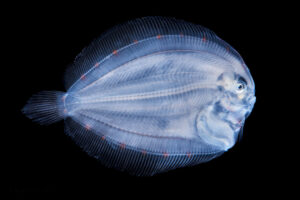The Bizarre Story of the Monkeypox Outbreak in America
The word “monkeypox” probably doesn’t conjure up images of a gruesome disease that made its appearance in America nearly two centuries ago. However, the consequences of this virus spreading were anything but monkey-like for the American people. In the summer of 1794, a group of colonists living near Fort Leavenworth, Kansas, were struck with a mysterious illness that left them covered in boils and open sores. They notified local authorities and military personnel stationed at the fort about their plight, only to be told it was an epidemic among Native Americans. The sick colonists believed them because they knew from experience that stories of terrifying diseases being spread among native peoples often turned out to be true. The virus in question? It was called “monkeypox,” and it was widely believed by early settlers to have been carried by African pygmies who would come across volunteer groups of native people during religious ceremonies.
Monkeypox in the U.S.?
No, not the famous “Shanti monkeypox” outbreak of 1777-1778 in India that led to the death of hundreds of thousands of people. The 1794 outbreak in Kansas was much closer in both time and place to that event, with the primary difference being the presence of Native American tribes in the area. In the latter case, African pygmies would have been among the tribesmen. The outbreak in Kansas was probably the result of atornadospittle (Diptera: Pseudococcidae) that made its way into the town water supply. Is the virus responsible for the outbreak? The genus “Variola,” or monkeypox, is believed to have been carried by the African wild monkeys living in the area.
What is Monkeypox?
Monkeypox is a disease that causes lesions (bruises) on the face and body, including the hands and feet, and is spread by contact with infected skin or secretions from patients. Using monkeys as a model, scientists have been able to better understand the epidemiology and genetics of this and other rickettsial illnesses. Monkeypox is not generally a disease that sick people contract. Instead, it is a condition that affects humans when a minority of the population is infected. The specific types of monkeys that are vulnerable to the disease and can be infected by contact with these animals include Sumatran (Indonesian) – Also known as “Black-faced,” this species is found in tropical areas of Indonesia and Sumatra. West-African – Also known as “Red-faced,” this species is native to tropical and subtropical areas of West and Central Africa. North American – Also called “White-faced,” this species is native to the eastern half of the U.S. and south-central Canada.
The 1794 Outbreak in Kansas
The 1794 outbreak in Kansas was the first recorded case of monkeypox in the United States. A native American woman living in Hillsboro, Kansas, became ill with the disease, which probably started as an infection in Africa, and then traveled to the United States. She was the first known person to contract the disease in the country. The woman, whose name is unknown, initially told her neighbors that she had contracted measles. Soon, though, the word got out that she had the “cursed disease” – which turned out to be monkeypox. The Hillsboro Courant reported on 10 August 1794 that “a few hours after the habitation of this city had been opened on a delivery of the infected person, the greatest part of the people were seized with the spongy and scabby skin disease.”
The Spread of Monkeypox
The first recorded case of monkeypox in the New World was in 1775, when an African pygmy woman came to St. Louis, Missouri, bearing a disease that she said she had contracted in India. The man she was traveling with became ill and died, and an autopsy showed that he had died from “consumption,” which was then still a disease confined to humans. This case caused widespread alarm in the region, and the public health authorities decided to remove African pygmies from the area. For the next two decades, a team of doctors removed more than 100 pygmies from the area, concentrating their efforts on those who were thought to be most likely to contract the disease. The removal of these people was risky because they were thought to be at higher risk of infection. An outbreak of monkeypox in the area in 1821, though, was minor compared to the one that had occurred in the previous decade.
After the Outbreak
The 1821 outbreak in Missouri was the last recorded case of monkeypox in the U.S. After that, the disease was apparently extinct in this country until 1892, when a group of settlers in California contracted the illness and later died from it. This outbreak was due to the return of the fromage plant, which grows wild in the Central Valley of California, and the possible exposure of some of the settlers to the plant. The disease was again unknown in the U.S. until 1947 when a group of scientists studied a case in a man living in New York City. The disease had apparently been carried by a monkey, and the patient had contracted it in Africa. Monkeypox, like any other infection, can be treated with a course of antibiotics. The risks of infection, however, make vaccination against monkeypox highly unlikely.
Conclusion
Although recent genetic studies have concluded that the bacterium responsible for canine distemper is closely related to the bacteria that cause pneumonia and pleurisy in humans, the two were likely never closely related. The discovery of monkeypox in 1794 during the first recorded case of vaccination in the United States gives us a picture of the disease in its infancy. It is likely that this outbreak had no connection whatsoever to the development of canine distemper. If anything, it was a result of the close relationship between Native Americans and African pygmies, who were close friends during religious ceremonies.
Share this content:













